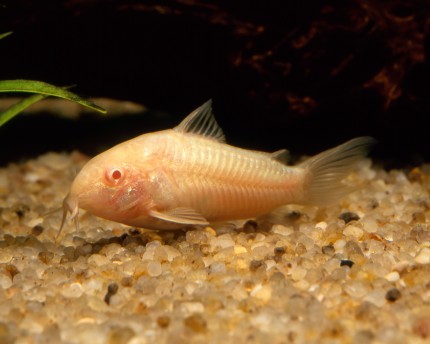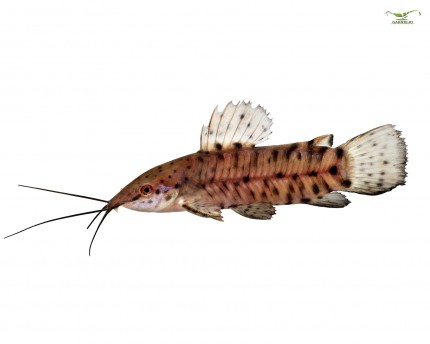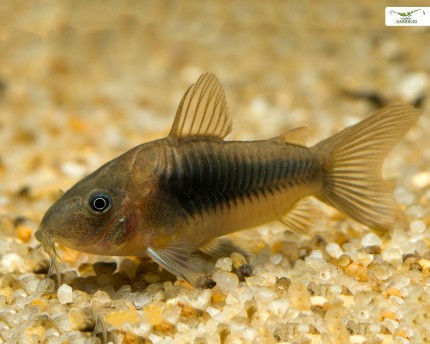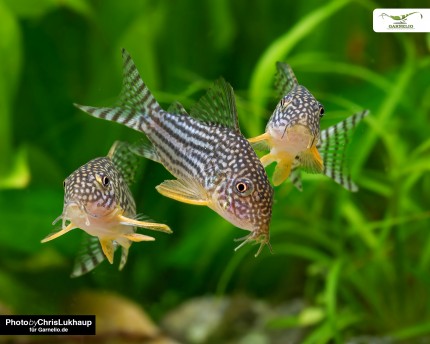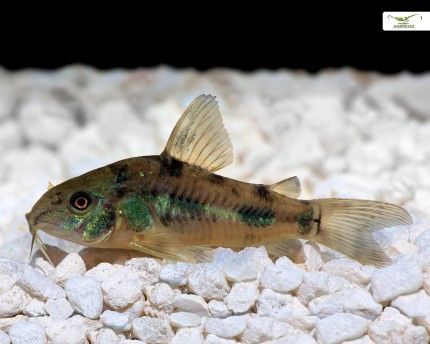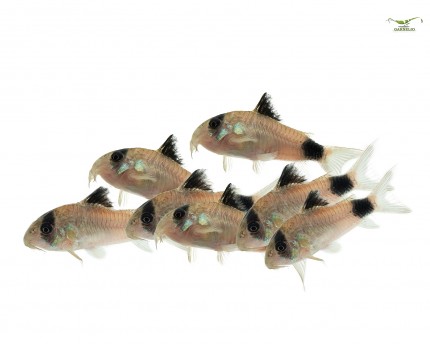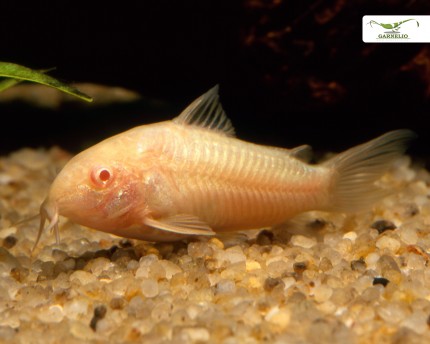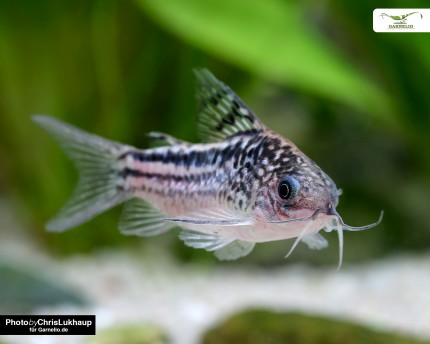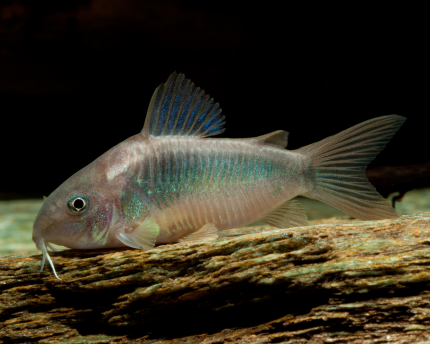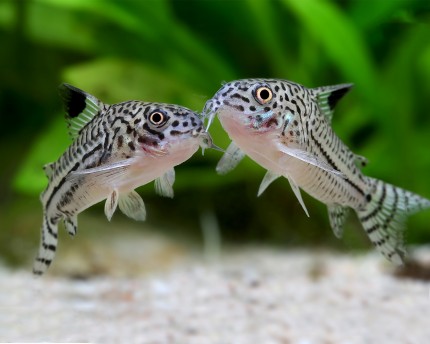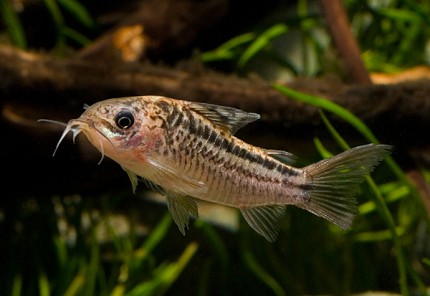Corydoras and callus catfishes in nature
Corys and callus catfishes originate from South America. The Corys are a subfamily of the catfishes, which contains with 150 Corydoras species the most species-rich genus among the catfishes. Closely related to Corys are the significantly larger callus catfish. Corydoras in the wild grow between 3 and 12 cm, Callus Catfish depending on the species sometimes up to 20 cm. Especially the smaller species have made it into aquaristics. Some are rather monochromatic - like the Black Metal Cory or the Emerald Cory, other Corys on the other hand have beautiful patterns of lines - like the Gold Laser Cory, the Orange Laser Cory, the Streamline Cory or the July Cory. Dot patterns are also common, such as in the Dotted Armored Catfish, the Redfin Armored Catfish, or the Silver Striped Armored Catfish. There are even armored catfish with black markings, such as the Panda Armored Catfish, Miguelito Armored Catfish or Sand's Armored Catfish - just to name a few of the great corys. In the wild, Corys sometimes live on rather angular rocky bottoms, but they are very grateful for sandy bottoms, which they rummage through for worms and other tidbits as is typical for their species. Through their gills they pump the absorbed sand back outside, which additionally cleans the gills. The scaleless armored catfishes have a carapace of thin bony plates that encase and protect their bodies. The underslung mouth is adorned with barbels that serve as sensory organs.
Corydoras are active and scurrying swimmers, but they have a vestigial swim bladder and therefore still mostly stay at the bottom of the water. As a rule, armored catfish live in waters with a high content of humic substances, which should also be offered to them in the aquarium.
Behavior of armored catfish in the aquarium
Corys are absolutely social, diurnal group fish. They scurry around busily all the time and go in search of food. As gut-breathers, they need to scurry to the water surface from time to time, which they do quickly and effectively.
Corydoras are exceptionally peaceful and do not actively hunt. They are perfect aquarium friends for a community aquarium with small to medium sized and rather peaceful fish. Especially the small species like the Dwarf Corydoras go great with dwarf shrimp. Callus cat fish, on the other hand, can grow considerably larger and may even eat shrimp.
Breeding Corydoras in the aquarium
Breeding Corydoras in the aquarium has been successful many times, although it can be difficult in the community aquarium, because the spawn or larvae are eaten. Callus catfish are a bit more difficult to breed, but their breeding is also possible in the aquarium, if you animate them to spawn by temperature changes and by variations in the water level
Socialization of Corydoras
The peaceful, fun, highly social Corydoras are popular in aquariums because they are perfect for an appropriate community aquarium. While they are omnivores, they do not actively hunt for shrimp or small dwarf crayfish, instead feeding on worms. Socialization with larger crayfish can end badly for the bottom-dwelling Corydoras because they will be eaten. Otherwise, they are perfect for a South America aquarium. Callus catfish grow a bit larger, which is something to consider when choosing an aquarium size.
Feeding armored catfish and callus catfish properly
Corydoras and Callus Catfish are omnivores with a distinct tendency to eat a carnivorous diet. In addition to sinking live food and frozen food, they will also take aquarium omnivore granules, such as our popular, high-quality NatureHolic main feed, with no problem at all.
Conclusion
Corys are great, scurrying, beautifully marked, easy to keep aquarium fish that are great to watch and over time prove to be real clowns in the aquarium. They are always busy, always scurrying, and they just seem cute with their chubby body shape and cute whiskered mouth. Corydoras are simply wonderful aquarium companions for a community aquarium. In Garnelio's online store you can buy vital, easy to keep classics as well as rarer Corydoras and rare Callus Catfish for your aquarium.

